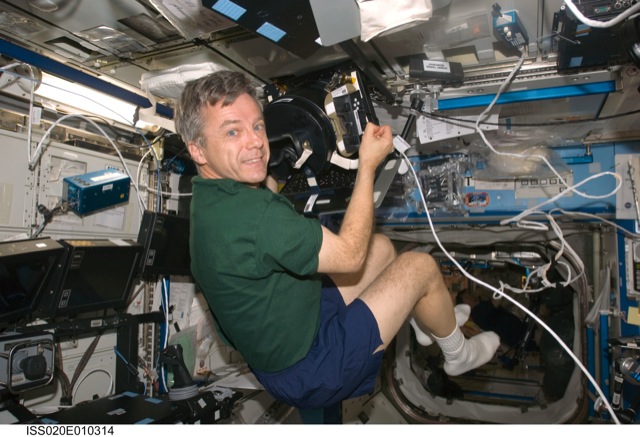
NAME: Robert (Bob) Brent Thirsk (P.ENG., MDCM, MBA)
Canadian Space Agency Astronaut - Active
PERSONAL DATA:
Born August 17, 1953, New Westminster, British Columbia. Married with
EXPERIENCE:
Dr. Thirsk was in the family medicine residency program at the Queen Elizabeth Hospital in Montréal when he was selected in December 1983 for the Canadian Astronaut Program.
SPACE EXPERIENCE:
Dr. Thirsk was one of first six Canadian astronauts selected in December 1983. He was selected as backup payload specialist to Marc Garneau for the October 1984 space shuttle mission STS-41G. Dr. Thirsk has been involved in various Canadian Space Agency projects including parabolic flight campaigns and mission planning. He served as crew commander for two space mission simulations: the seven-day CAPSULS mission in 1994, at Defense Research and Development Canada in Toronto, and the 11-day NEEMO 7 undersea mission in 2004 at the National Undersea Research Center in Key Largo, Florida. He led an international research team investigating the effect of weightlessness on the heart and blood vessels. He works with educational specialists in Canada to develop space-related curriculum for grade school students. Initiatives such as Canolab, Space for Species, and Tomatosphere have allowed thousands of young Canadians to experience the thrill of scientific discovery. In 1998, Dr. Thirsk was assigned by the Canadian Space Agency to NASA's Johnson Space Center in Houston to pursue mission specialist training. This training program involves advanced instruction on both shuttle and space station systems, EVA (spacewalking), robotic operations, and Russian language. Within the NASA Astronaut Office, Dr. Thirsk serves as a CapCom (capsule communicator) for the International Space Station (ISS) program. In 2004, Dr. Thirsk trained at the Yuri Gagarin Cosmonaut Training Centre near Moscow and became certified as a Flight Engineer for the Soyuz spacecraft. He served as backup Flight Engineer to European Space Agency (ESA) astronaut Roberto Vittori for the Soyuz 10S taxi mission to the ISS in April 2005. During the 10-day mission, Dr. Thirsk worked as Crew Interface Coordinator (i.e. European CapCom) at the Columbus Control Centre in Germany.
SPACE FLIGHTS:
STS-78
In June and July 1996, Dr. Thirsk flew as a payload specialist aboard space shuttle mission STS-78, the Life and Microgravity Spacelab (LMS) mission. During this 17-day flight aboard Columbia, he and his six crewmates performed 43 international experiments devoted to the study of life and materials sciences. The life science experiments investigated changes in plants, animals, and humans under space flight conditions. The materials science experiments examined protein crystallization, fluid physics and high-temperature solidification of multi-phase materials in a weightless environment.
EXPEDITION 20/21
On May 27, Canadian Space Agency astronaut Bob Thirsk was the first Canadian ever to be launched into space aboard a Soyuz (TMA-15) spacecraft from the Baikonur Cosmodrome in Kazakhstan. Along with Russian cosmonaut Roman Romanenko and European Space Agency astronaut Frank De Winne they spent 188 days in space, 186 of those days living and working onboard the International Space Station (ISS). Dr. Thirsk served as a Flight Engineer in his 6-month tour of duty aboard the International Space Station during which time he assumed responsibilities for the maintenance and repair of the ISS, while conducting experiments on behalf of Canadian and international researchers. Dr. Thirsk also operated Canadarm2, Canada's signature contribution to the ISS. Thirsk and fellow Expedition 21 crewmembers return to Earth on December 1, 2009
CURRENT STATUS:
Dr. Thirsk is currently on active duty and working at NASA. September 2010